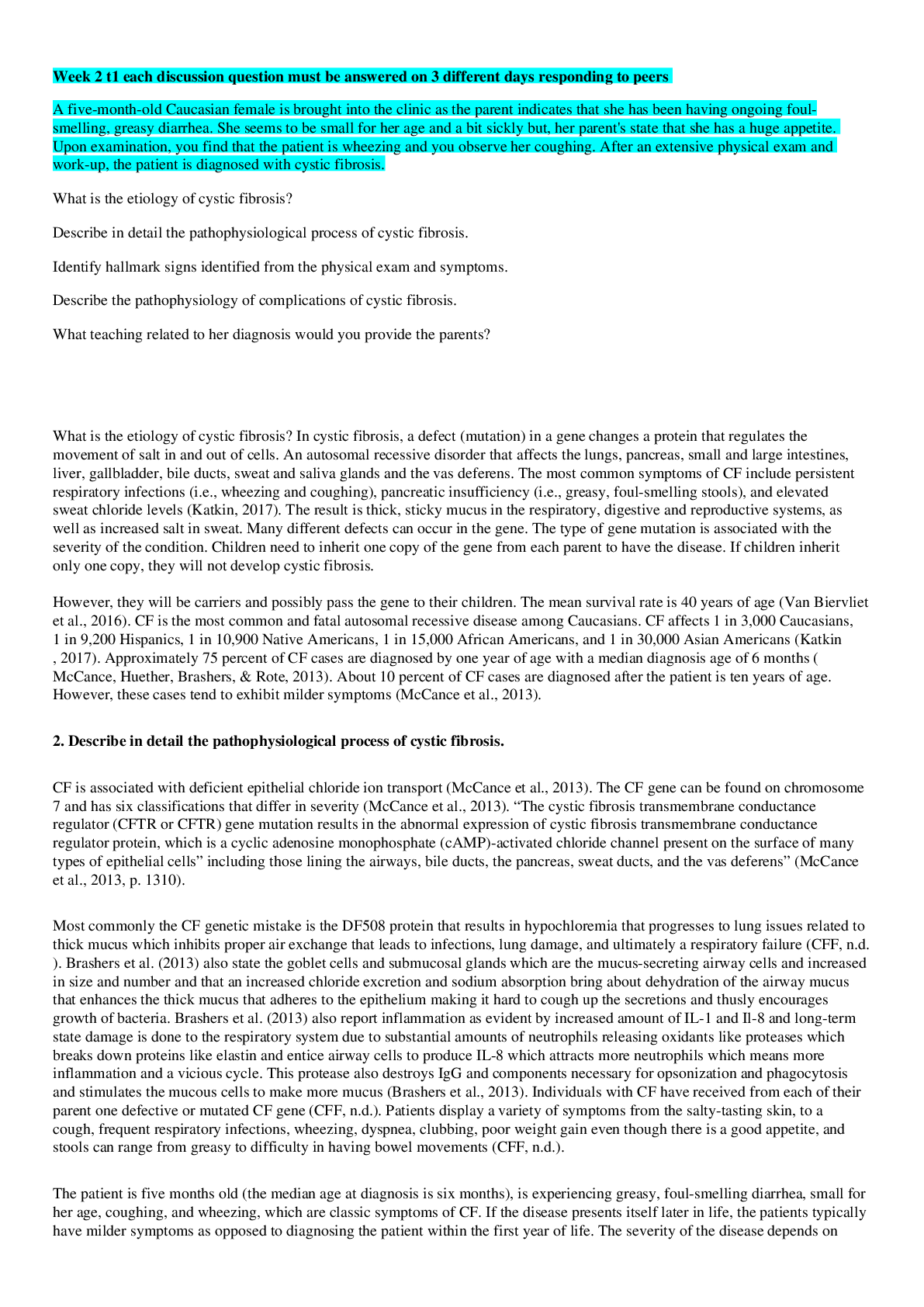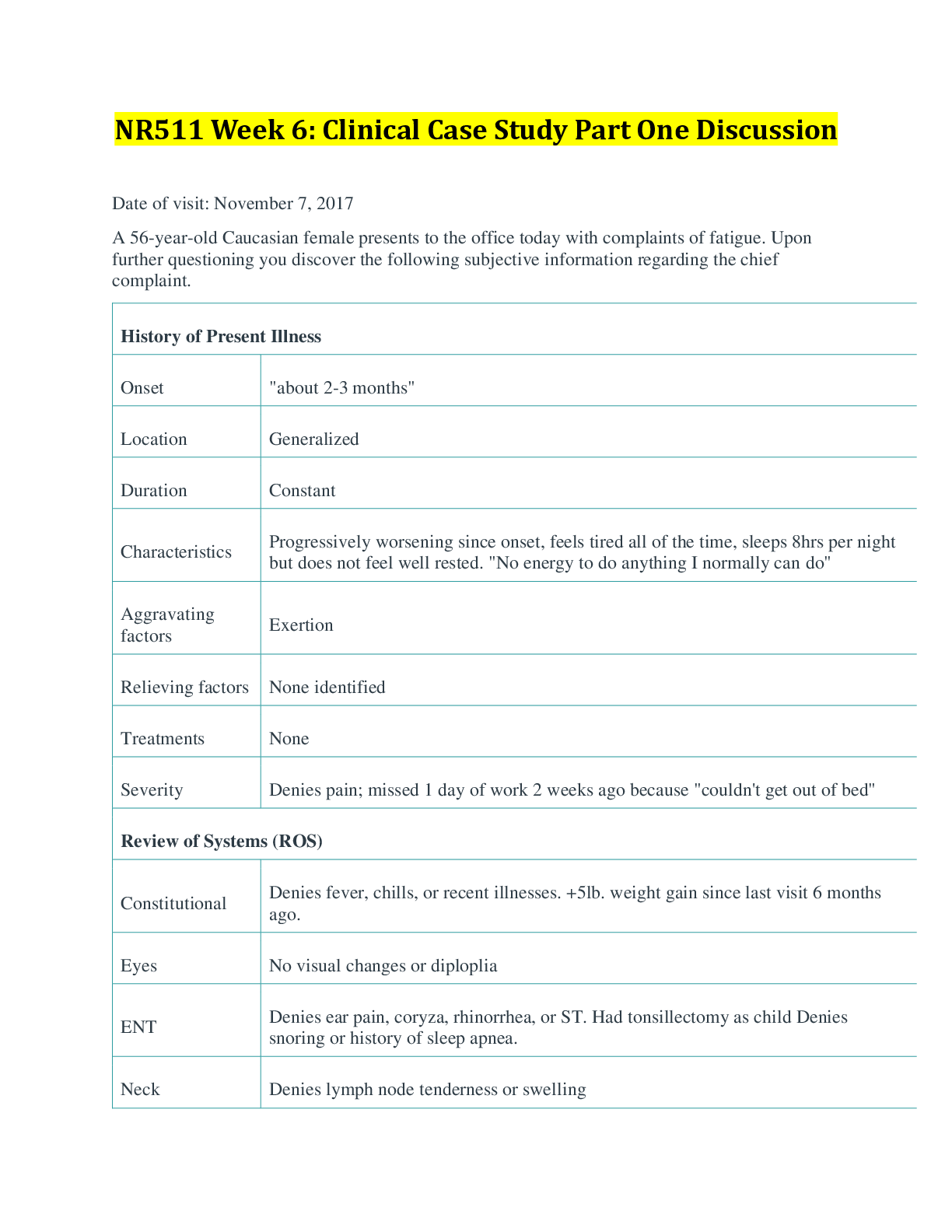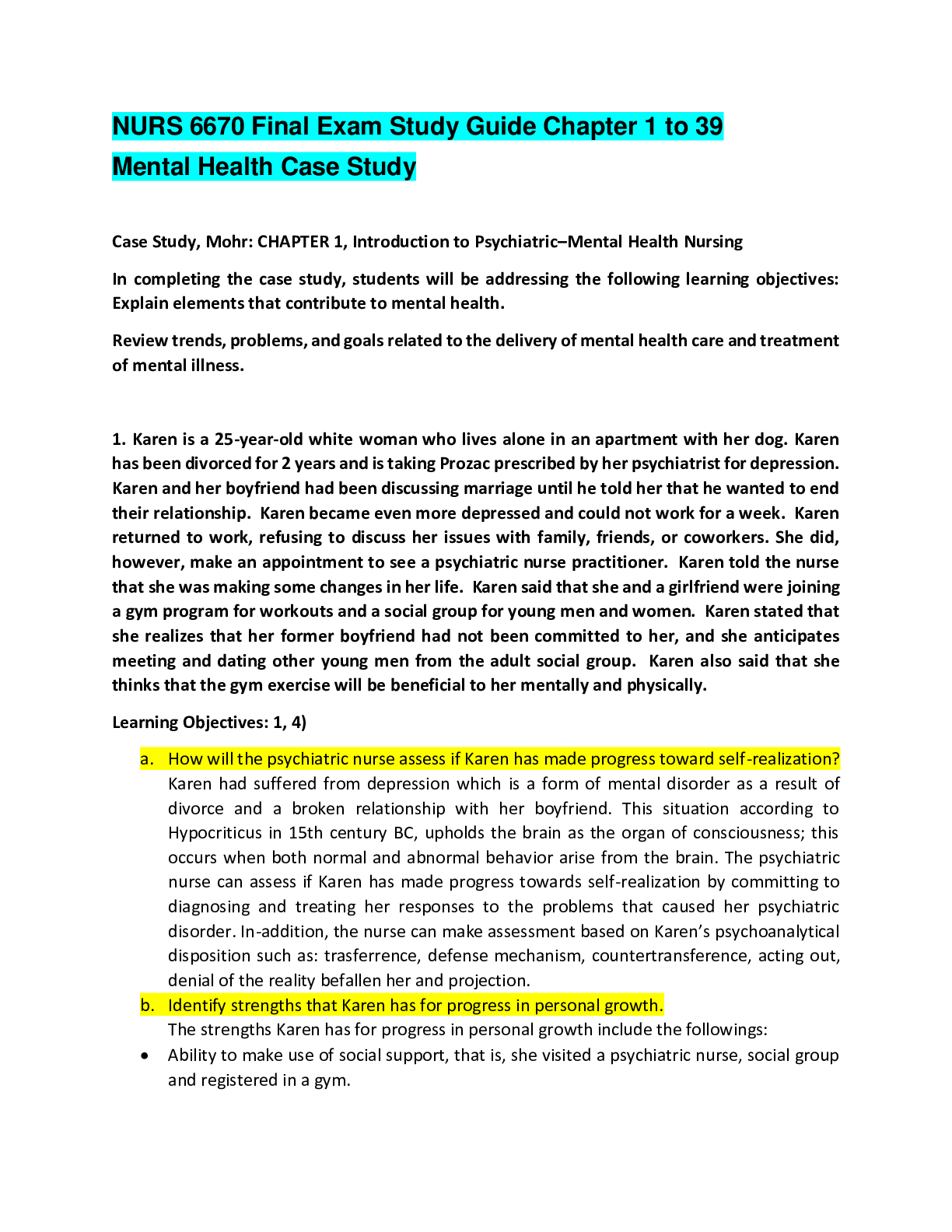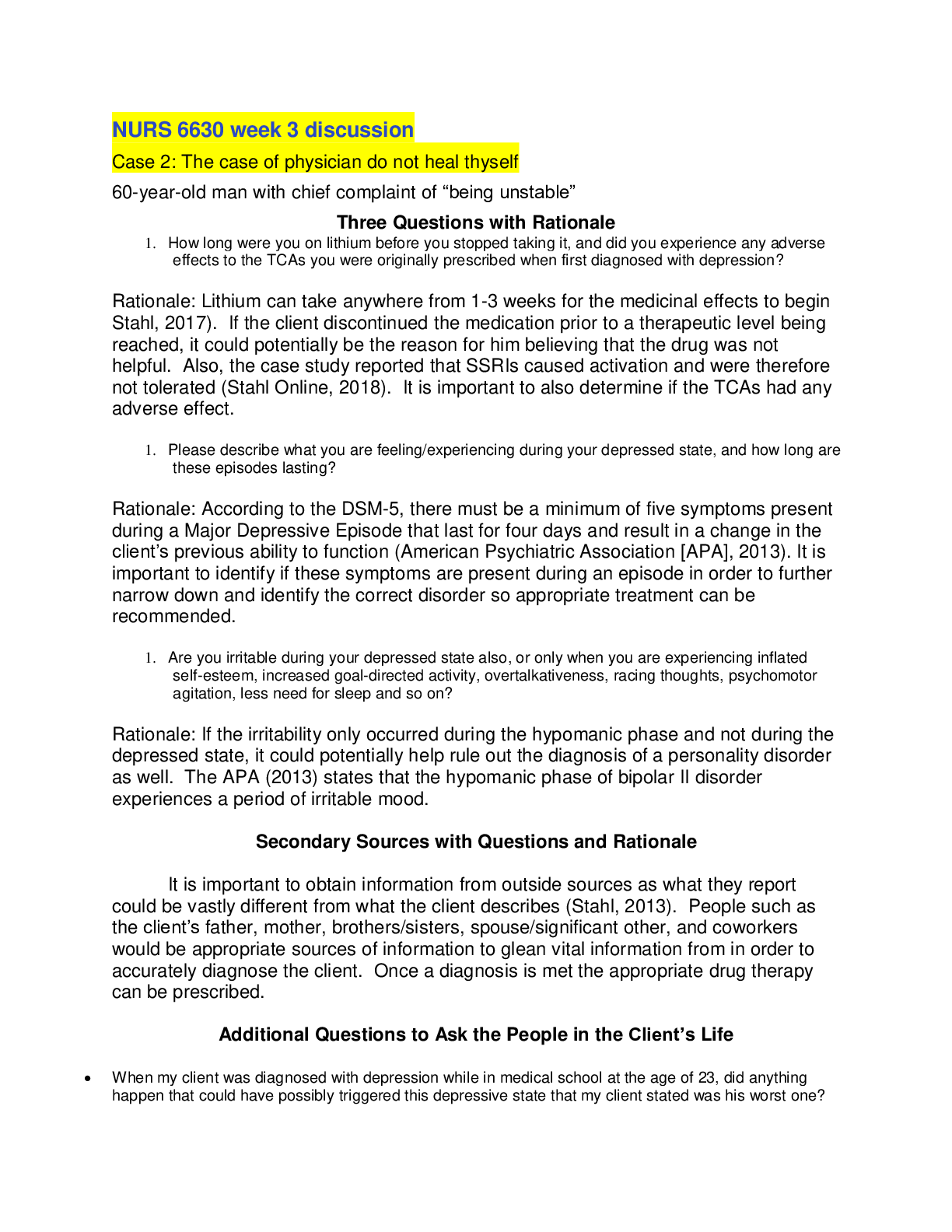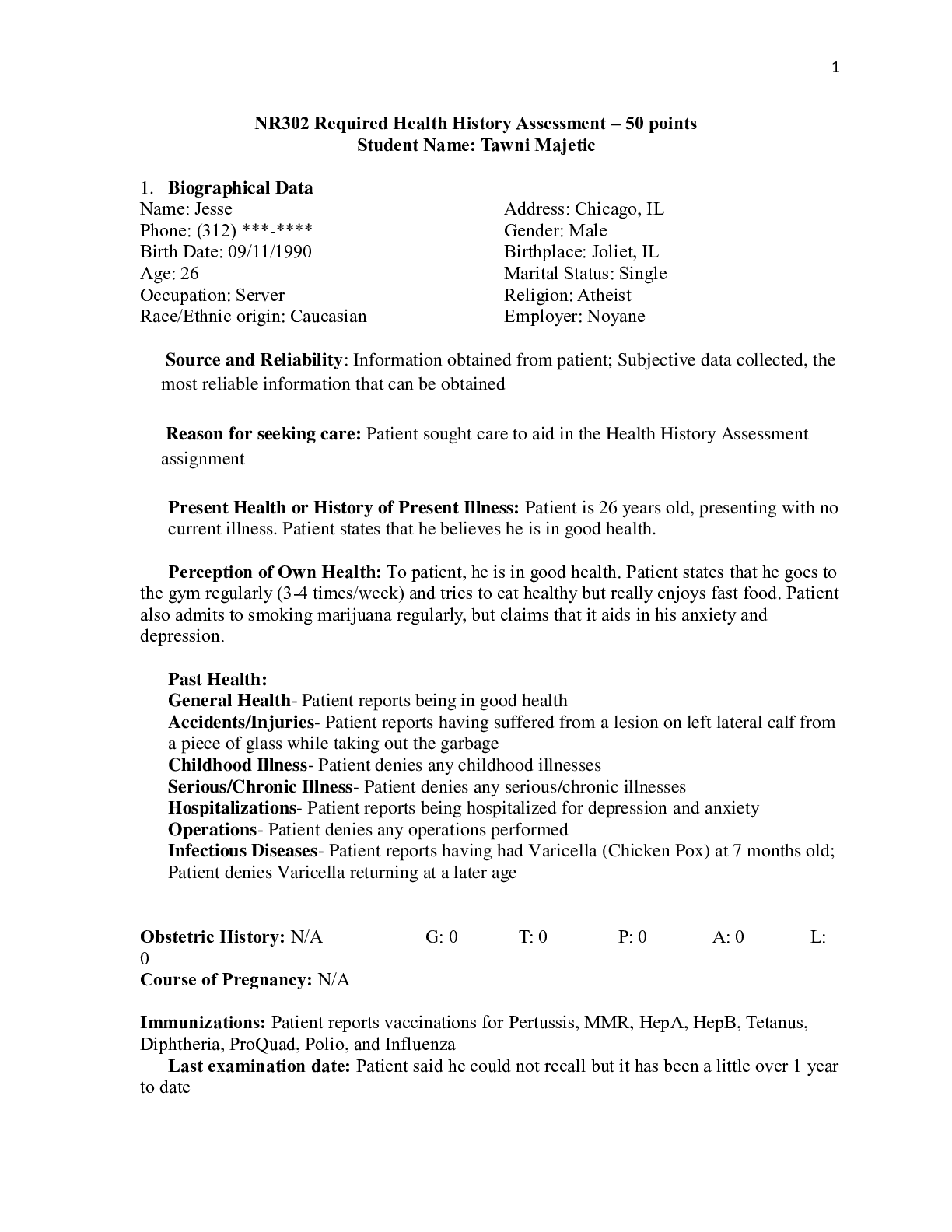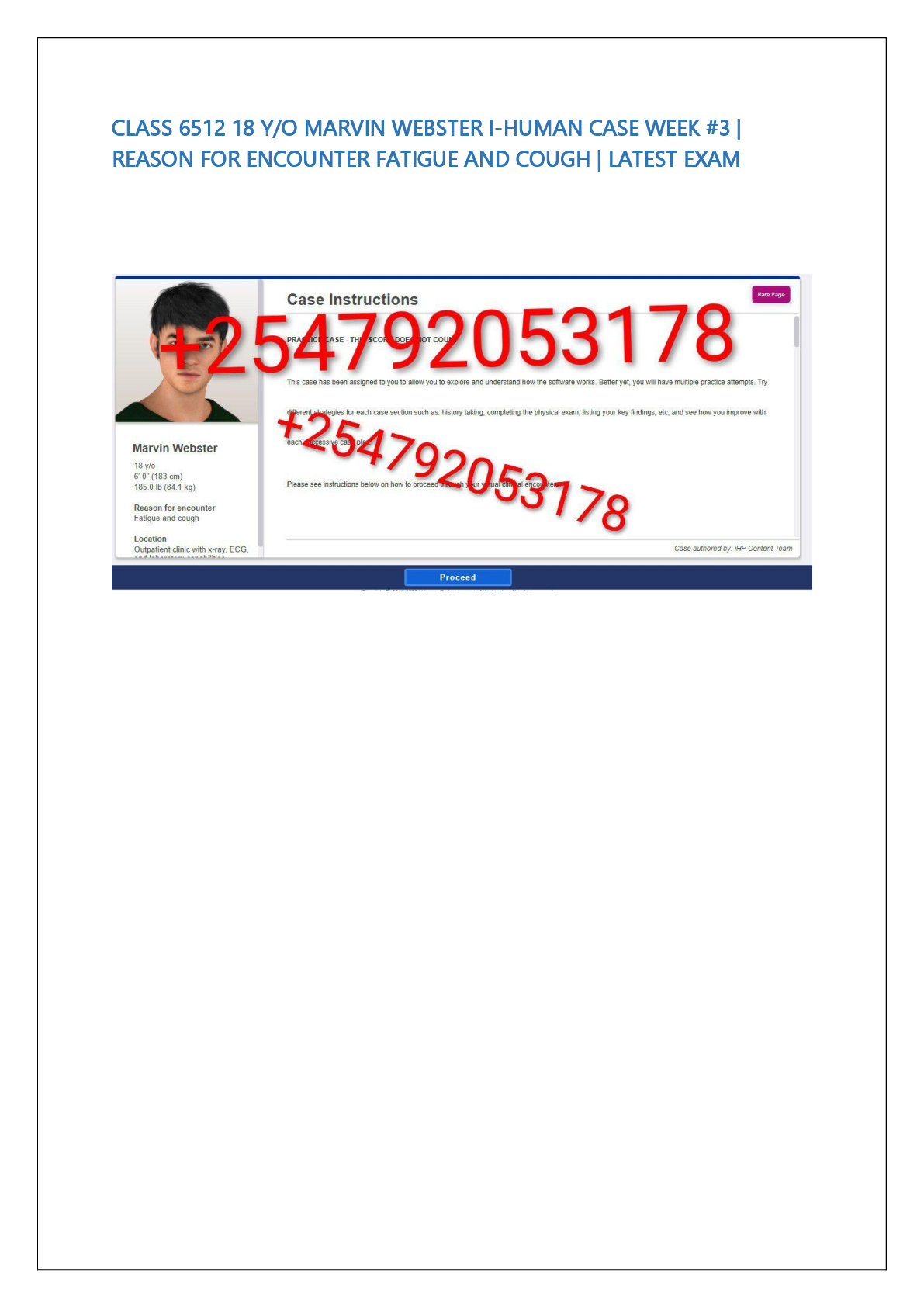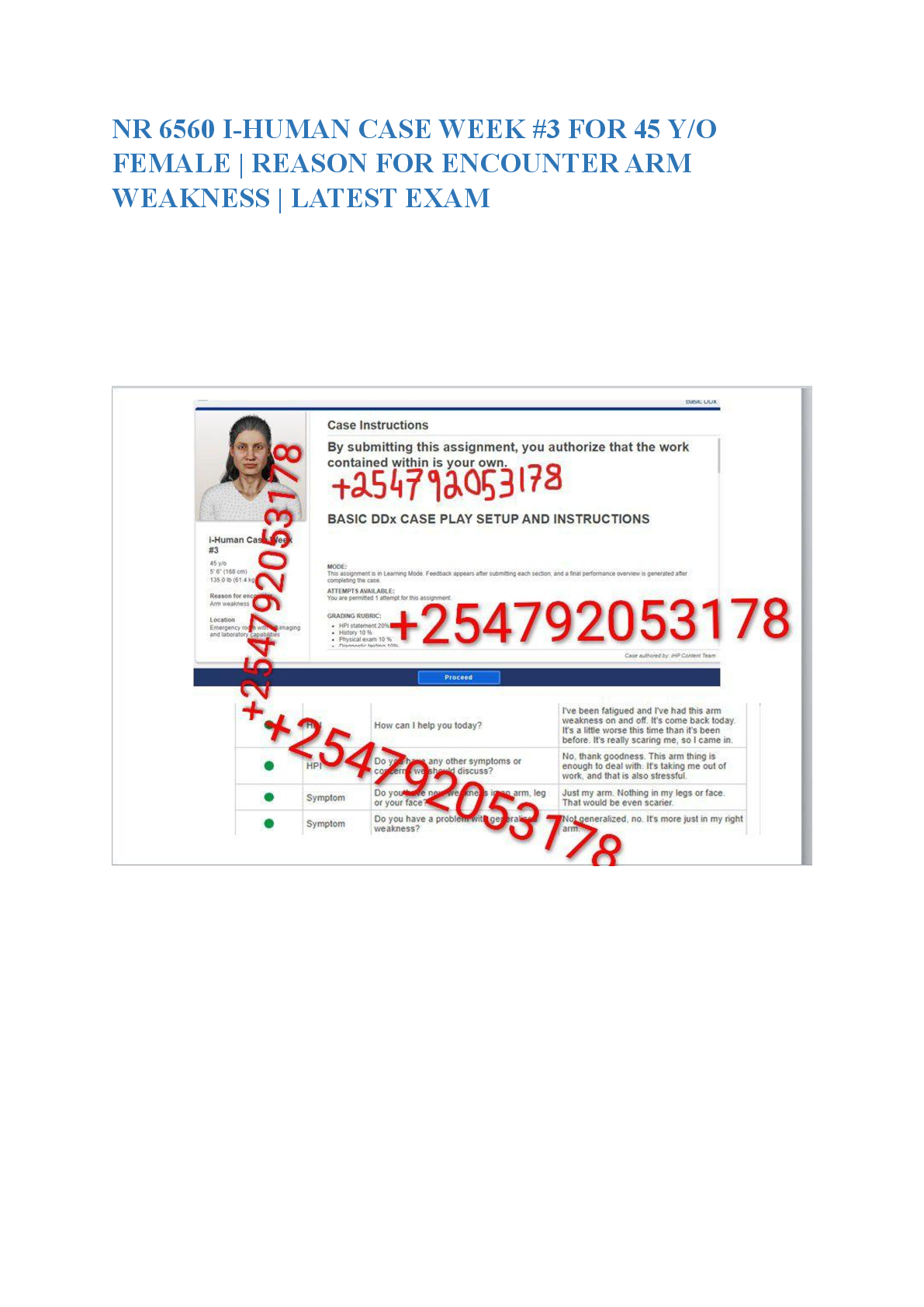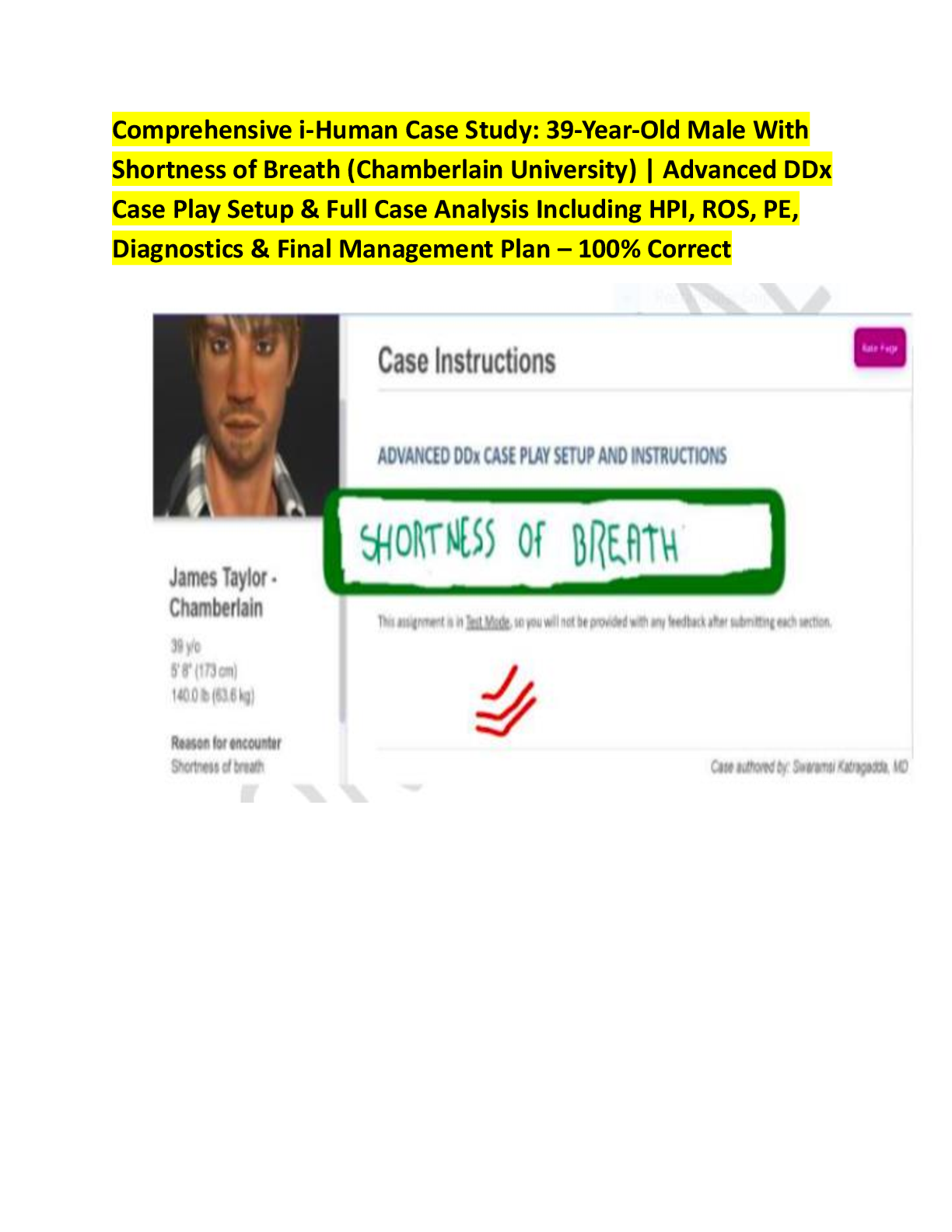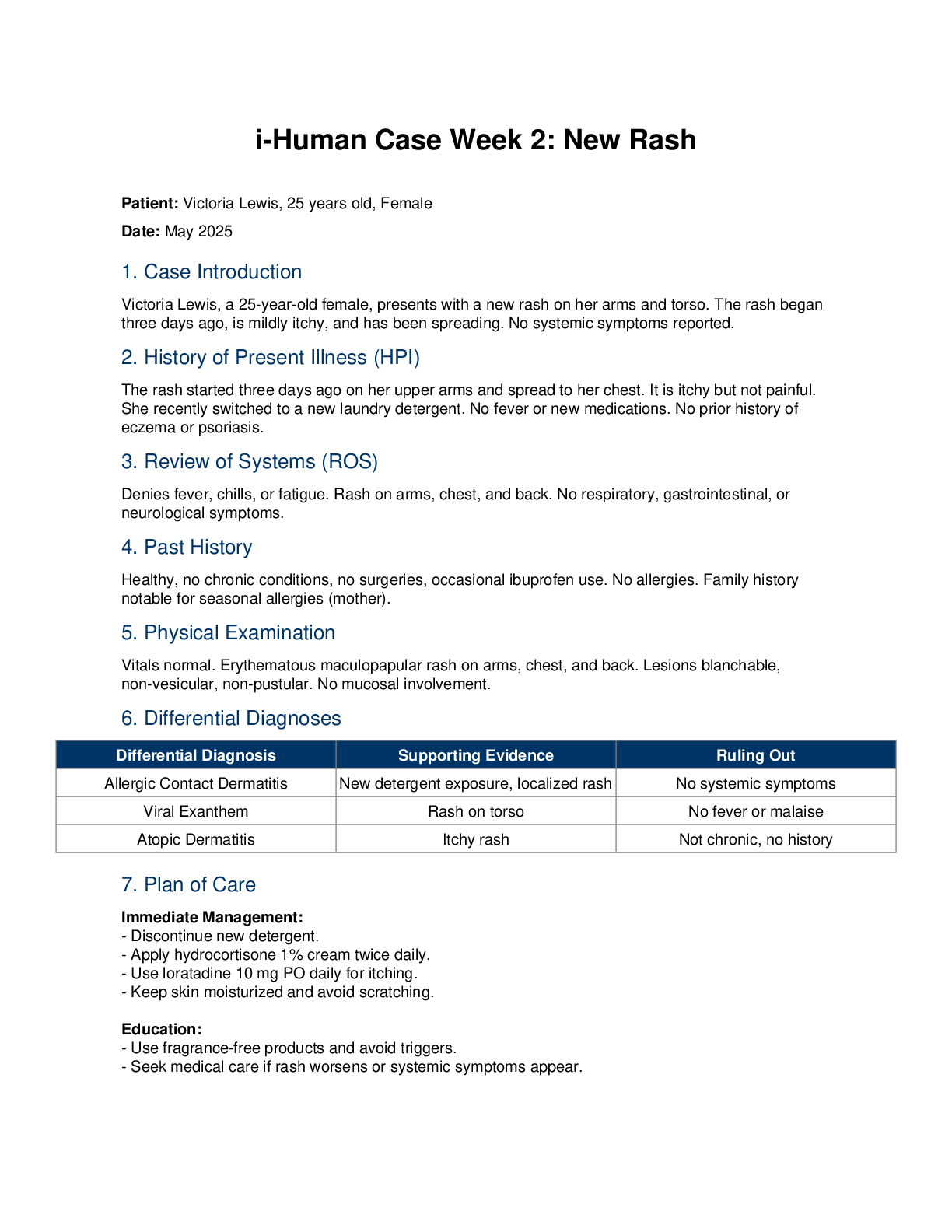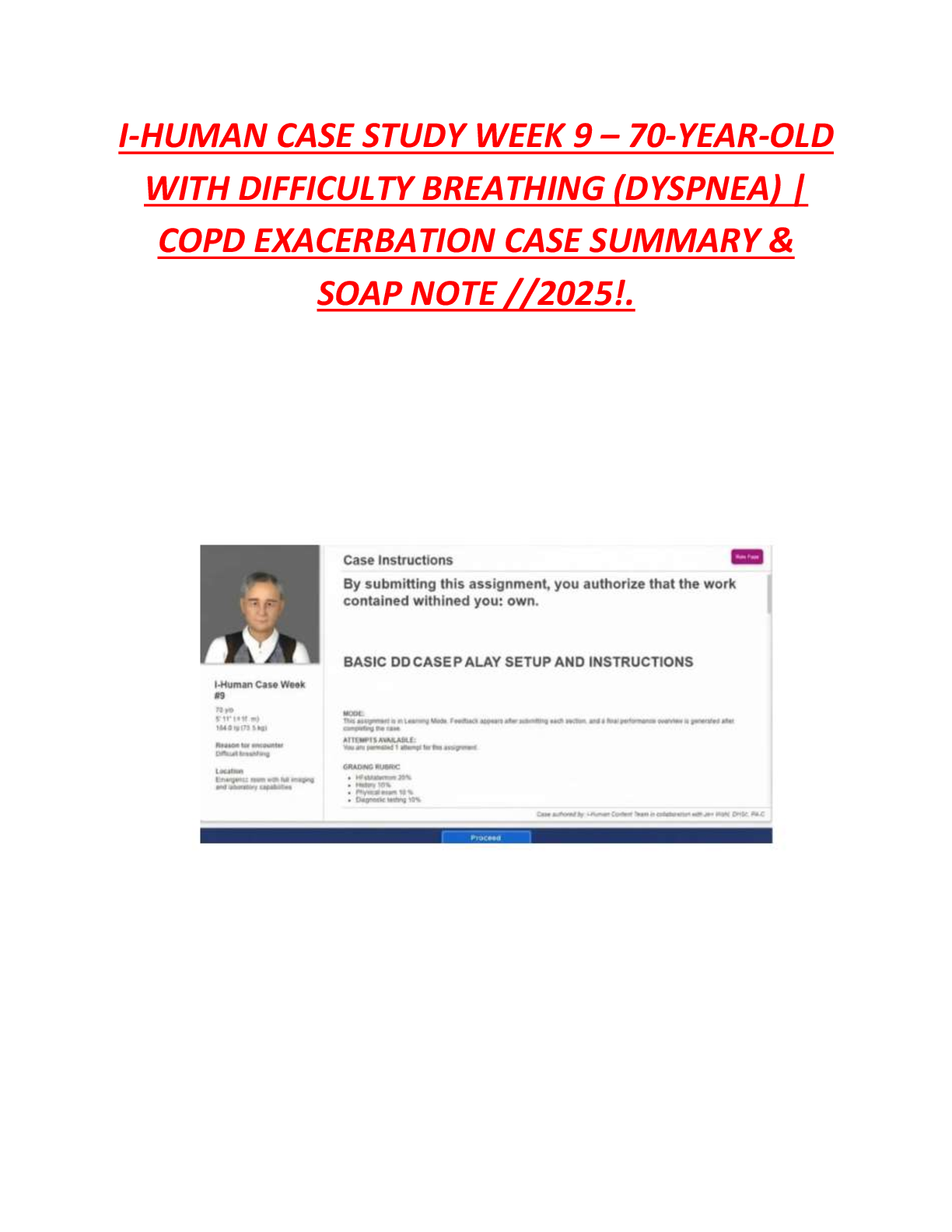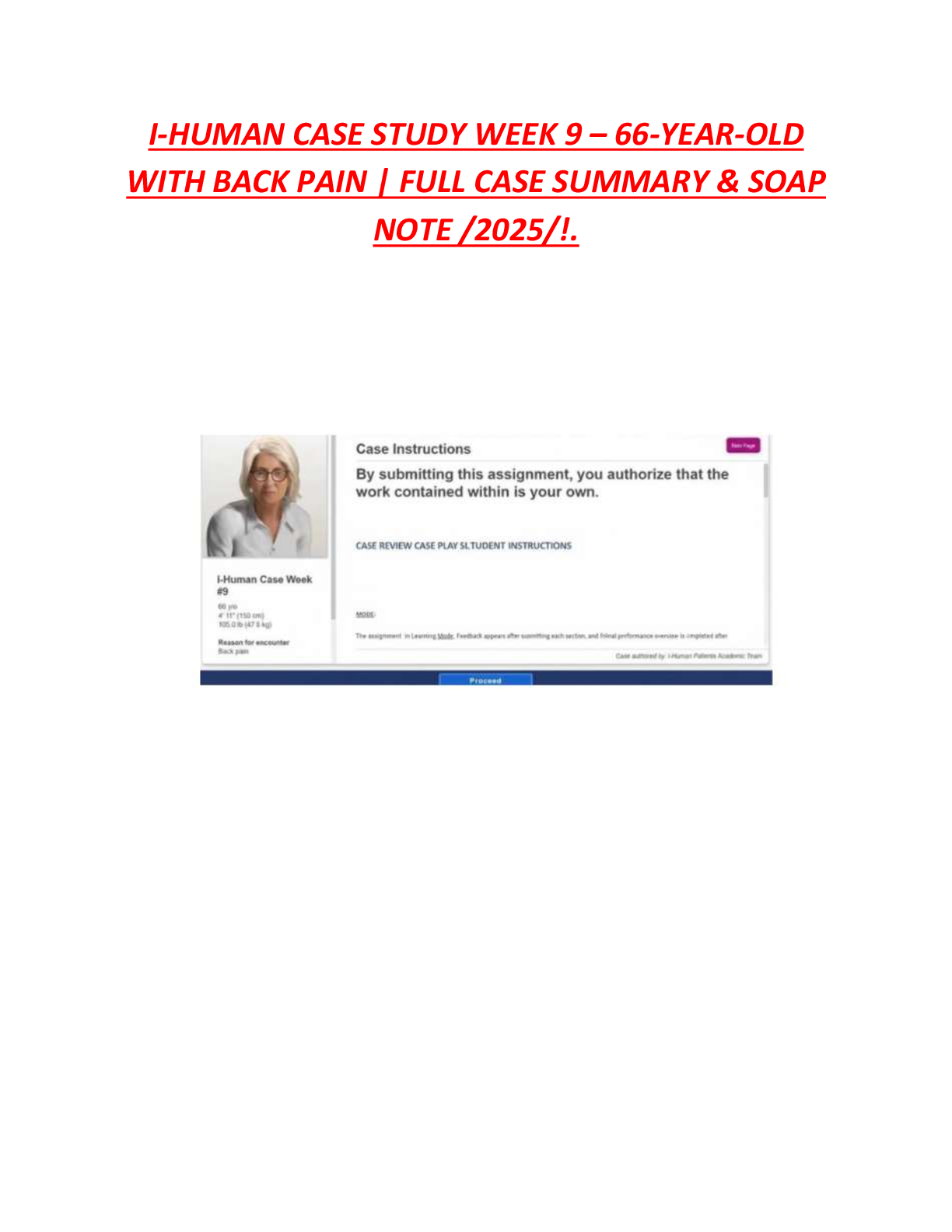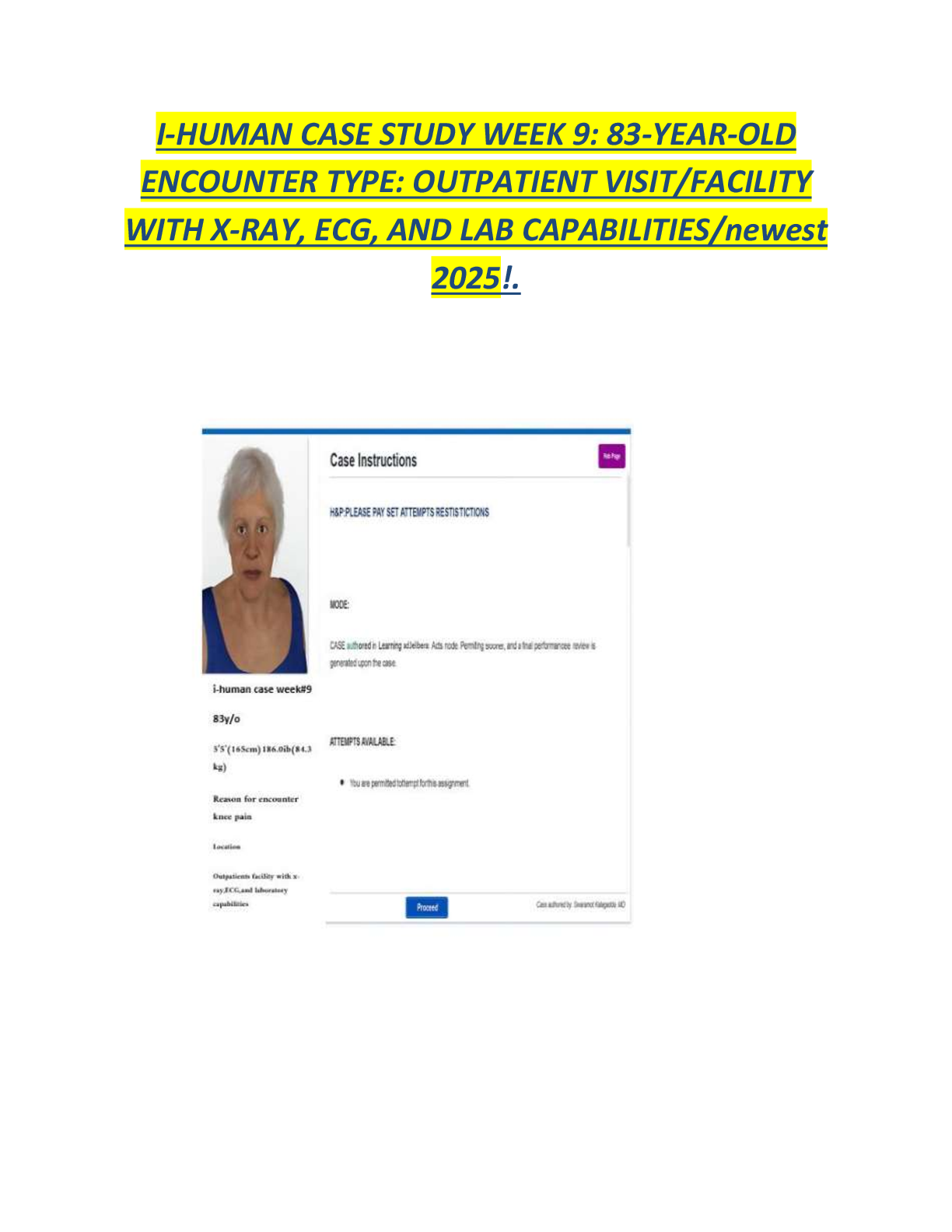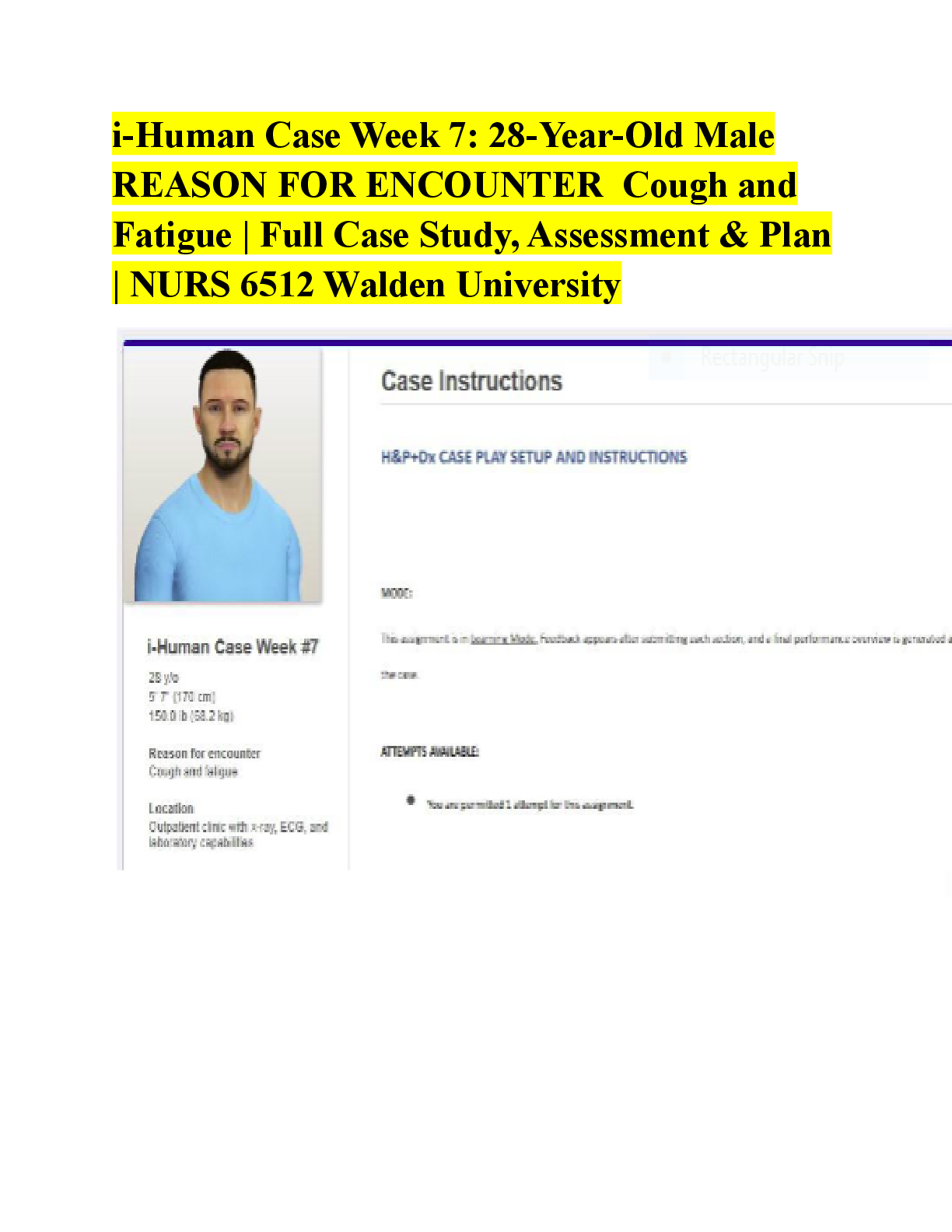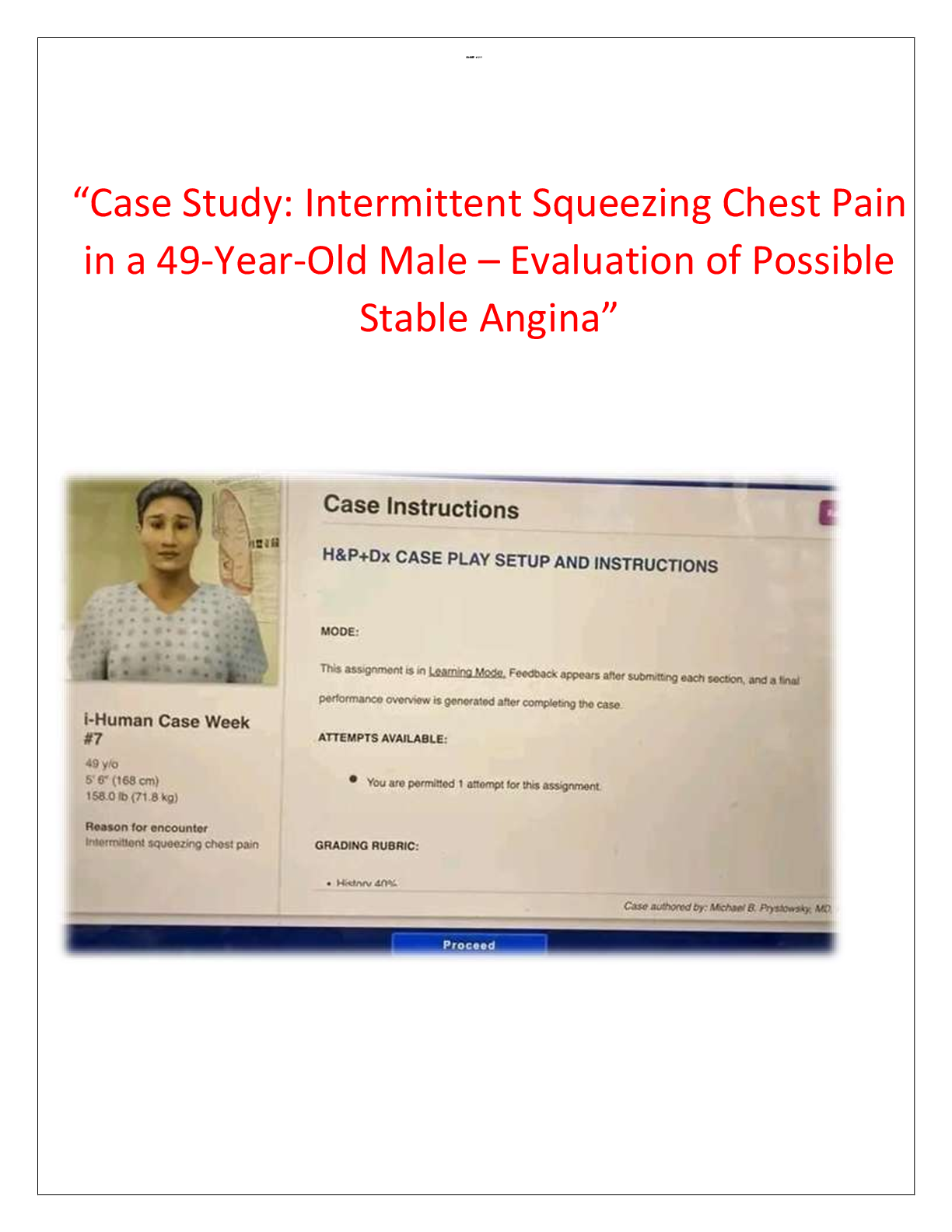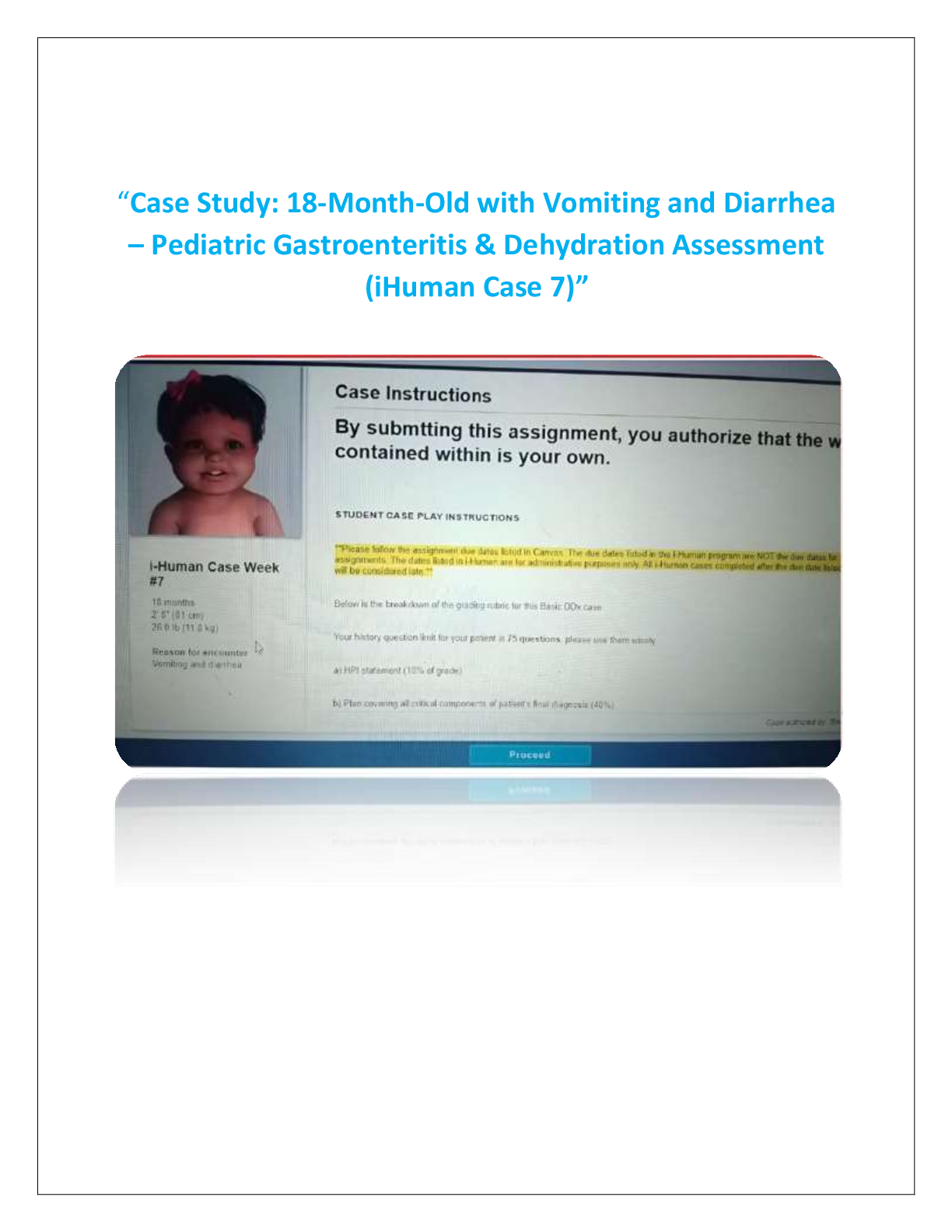Biology > CASE STUDY > BIOS 242 Week 7 iLab EPIDEMIOLOGY | Latest Answered 2025. (All)
BIOS 242 Week 7 iLab EPIDEMIOLOGY | Latest Answered 2025.
Document Content and Description Below
EPIDEMIOLOGY Introduction This experiment is dedicated to determining which bacterium is responsible for the death of the two zoo animal as mentioned in case study number 71 below. The following ... test will be performed Acid from Glucose, Gas from Glucose, Lysine decarboxylase, Malonate Untilization, Salicin fermentation, Sorbital fermentation, Growth in KCN, and Dulcitol fermentation. The experiments/tests in this lab are intended to determine whether fermentation of a carbohydrate into a carbon component/source and figuring out the correct bacterium. The finding of these tests revealed that Salmonella bongori was discovered in the stool specimens. Case Study: Procedure Acid from Glucose Test: Inoculation of Medium 1. Select the phenol red glucose broth medium. 2. Start your Bunsen burner. 3. Select the inoculating loop tool. 4. Flame your inoculating loop to sterilize it. 5. Remove the caps from your test tubes. 6. Flame the mouths of your test tubes. 7. Use the sterile inoculating tool to pick up an inoculum from the culture tube of the unknown bacterium. 8. Immediately transfer the inoculum into the fresh, sterile medium. 9. Flame the mouths of your tubes once again. 10. Replace the caps on the test tubes. 11. Re-flame the inoculating tool. Incubation of the Inoculated Medium 12. Place the inoculated tube into the 35-37 C incubator. 13. Press the New Day button to move forward 24 hours. Determination of Test Results 14. Incubate for the appropriate length of time. For this test, 24 hours is sufficient for determining the result. 15. Retrieve the incubated culture from the incubator. 16. Observe the color of the sample. The culture changes to yellow in the presence of acids (indicating a positive test) and magenta or hot pink in the presence of bases/alkali (indicating a negative test). 17. Record test result. 18. Dispose of the culture. Lysine decarboxylase Test: Inoculation of Medium 1. Select the lysine decarboxylase broth medium. 2. Start your Bunsen burner. 3. Select the inoculating loop tool. 4. Flame your inoculating loop to sterilize it. 5. Remove the caps from your test tubes. 6. Flame the mouths of your test tubes. 7. Use the sterile inoculating tool to pick up an inoculum from the culture tube of the unknown bacterium. 8. Immediately transfer the inoculum into the fresh, sterile medium. 9. Flame the mouths of your tubes once again. 10. Replace the caps on the test tubes. 11. Re-flame the inoculating tool. Incubation of the Inoculated Medium 12. Place the inoculated tube into the 35-37 C incubator. 13. Press the New Day button to move forward 24 hours. Determination of Test Results 14. Incubate for the appropriate length of time. For this test, the color must be noted at both 24 and 48 hours to determine the result. (i.e., you will perform steps 12-16 twice to complete the test). 15. Retrieve desired incubated culture from the incubator. 16. Observe test result. If the test was followed as described above, the culture will have changed to yellow in the presence of acids or remains purple at neutral pH or in the presence of bases/alkali. For this test, noting the color at 24 h is necessary for proper interpretation of results, but an additional 24 hours of incubation is necessary to determine result for the completed test. After the color of the tube is observed, replace the tube in the incubator for at least one more day (perform steps 12-16 again). 17. Record test result. 18. Dispose of the culture. Conduct Malonate Utilization Test: Inoculation of Medium 1. Select the malonate broth medium. 2. Start your Bunsen burner. 3. Select the inoculating loop tool. 4. Flame your inoculating loop to sterilize it. 5. Remove the caps from your test tubes. 6. Flame the mouths of your test tubes. 7. Use the sterile inoculating tool to pick up an inoculum from the culture tube of the unknown bacterium. 8. Immediately transfer the inoculum into the fresh, sterile medium. 9. Flame the mouths of your tubes once again. 10. Replace the caps on the test tubes. 11. Re-flame the inoculating tool. Incubation of the Inoculated Medium 12. Place the inoculated tube into the 35-37 C incubator. 13. Press the New Day button to move forward 24 hours. Determination of Test Results 14. Incubate for the appropriate length of time. For this test, 24 hours is sufficient for determining the result. 15. Retrieve desired incubated culture from the incubator. 16. Observe test result. If the test was followed as described above, the culture will have changed to blue in the presence of alkali/bases (indicating a positive test). In negative tests, there is rarely any growth. 17. Record test result. 18. Dispose of the culture Conduct Salacin Fermenation Test: Inoculation of Medium 1. Select the phenol red salicin broth medium. 2. Start your Bunsen burner. 3. Select the inoculating loop tool. 4. Flame your inoculating loop to sterilize it. 5. Remove the caps from your test tubes. 6. Flame the mouths of your test tubes. 7. Use the sterile inoculating tool to pick up an inoculum from the culture tube of the unknown bacterium. 8. Immediately transfer the inoculum into the fresh, sterile medium. 9. Flame the mouths of your tubes once again. 10. Replace the caps on the test tubes. 11. Re-flame the inoculating tool. Incubation of the Inoculated Medium 12. Place the inoculated tube into the 35-37 C incubator. 13. Press the New Day button to move forward 24 hours. Determination of Test Results 14. Incubate for the appropriate length of time. For this test, 24 hours is sufficient for determining the result. 15. Retrieve desired incubated culture from the incubator. 16. Observe test result. If the test was followed as described above, the culture will have changed to yellow in the presence of acids (indicating a positive test) or magenta or hot pink in the presence of bases/alkali (indicating a negative test). 17. Record test result. 18. Dispose of the culture. Conduct Sorbitol Fermenation Test: Inoculation of Medium 1. Select the phenol red sorbitol broth medium. 2. Start your Bunsen burner. 3. Select the inoculating loop tool. 4. Flame your inoculating loop to sterilize it. 5. Remove the caps from your test tubes. 6. Flame the mouths of your test tubes. 7. Use the sterile inoculating tool to pick up an inoculum from the culture tube of the unknown bacterium. 8. Immediately transfer the inoculum into the fresh, sterile medium. 9. Flame the mouths of your tubes once again. 10. Replace the caps on the test tubes. 11. Re-flame the inoculating tool. Incubation of the Inoculated Medium 12. Place the inoculated tube into the 35-37 C incubator. 13. Press the New Day button to move forward 24 hours. Determination of Test Results 14. Incubate for the appropriate length of time. For this test, 24 hours is sufficient for determining the result. 15. Retrieve desired incubated culture from the incubator. 16. Observe test result. If the test was followed as described above, the culture will have changed to yellow in the presence of acids (indicating a positive test) or magenta or hot pink in the presence of bases/alkali (indicating a negative test). 17. Record test result. 18. Dispose of the culture. Conduct Growth in KCN Test: Inoculation of Medium 1. Select the potassium cyanide (KCN) broth medium. 2. Start your Bunsen burner. 3. Select the inoculating loop tool. 4. Flame your inoculating loop to sterilize it. 5. Remove the caps from your test tubes. 6. Flame the mouths of your test tubes. 7. Use the sterile inoculating tool to pick up an inoculum from the culture tube of the unknown bacterium. 8. Immediately transfer the inoculum into the fresh, sterile medium. 9. Flame the mouths of your tubes once again. 10. Replace the caps on the test tubes. 11. Re-flame the inoculating tool. Incubation of the Inoculated Medium 12. Place the inoculated tube into the 35-37 C incubator. 13. Press the New Day button to move forward 24 hours. Determination of Test Results 14. Incubate for the appropriate length of time. For this test, 24 hours is sufficient for determining the result. 15. Retrieve desired incubated culture from the incubator. 16. Observe test result. The test is positive if there is marked turbidity in the tube. In negative tests, there is no growth. 17. Record test result. 18. Dispose of the culture. Conduct Dulcitol Fermentation Test: Inoculation of Medium 1. Select the phenol red dulcitol broth medium. 2. Start your Bunsen burner. 3. Select the inoculating loop tool. 4. Flame your inoculating loop to sterilize it. 5. Remove the caps from your test tubes. 6. Flame the mouths of your test tubes. 7. Use the sterile inoculating tool to pick up an inoculum from the culture tube of the unknown bacterium. 8. Immediately transfer the inoculum into the fresh, sterile medium. 9. Flame the mouths of your tubes once again. 10. Replace the caps on the test tubes. 11. Re-flame the inoculating tool. Incubation of the Inoculated Medium 12. Place the inoculated tube into the 35-37 C incubator. 13. Press the New Day button to move forward 24 hours. Determination of Test Results 14. Incubate for the appropriate length of time. For this test, 24 hours is sufficient for determining the result. 15. Retrieve desired incubated culture from the incubator. 16. Observe test result. If the test was followed as described above, the culture will have changed to yellow in the presence of acids (indicating a positive test) or magenta or hot pink in the presence of bases/alkali (indicating a negative test). 17. Record test result. 18. Dispose of the culture. [Show More]
Last updated: 1 year ago
Preview 1 out of 10 pages

Loading document previews ...
Buy this document to get the full access instantly
Instant Download Access after purchase
Buy NowInstant download
We Accept:

Also available in bundle (1)
Click Below to Access Bundle(s)

Fundamentals Of Microbiology With Lab BIOS 242 All Quizzes, Cases & Exams Answered & Graded Latest Fall 2025/2026.
BIOS 242 Fundamentals of Microbiology with Lab; Microbiology- Mid Term Study Guide (2021/2022) BIOS 242 Week 6 Assignment; Respiratory Case Study; Respiratory System Infection in Elementary School...
By Expert#1 1 year ago
$28.5
9
Reviews( 0 )
$7.50
Can't find what you want? Try our AI powered Search
Document information
Connected school, study & course
About the document
Uploaded On
Dec 16, 2019
Number of pages
10
Written in
All
Additional information
This document has been written for:
Uploaded
Dec 16, 2019
Downloads
0
Views
261

